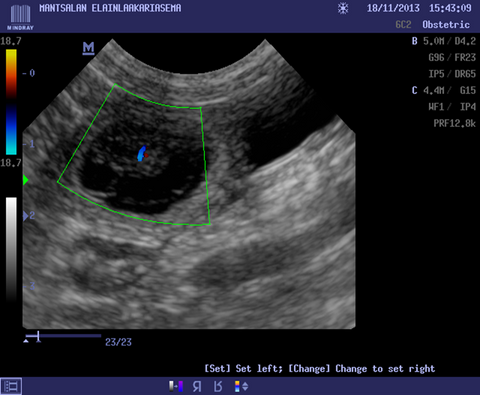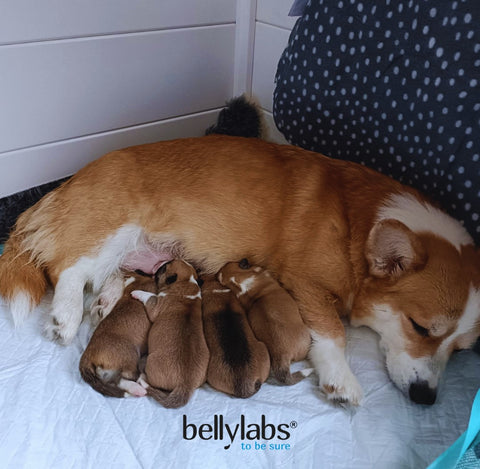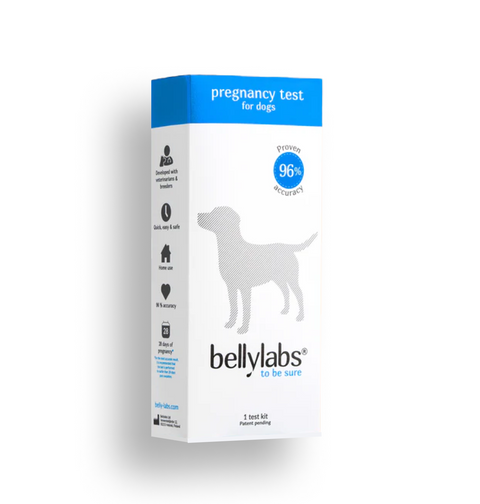To ensure the health and well-being of your pregnant dog and her future pups, it's a good idea to monitor the pregnancy accurately. One indispensable tool in this process is dog pregnancy ultrasound scanning. In this comprehensive guide, we'll explore the world of dog ultrasound scanning for pregnancy determination. We'll cover topics such as when and why these scans are performed, what to expect during the procedure, and their significance at various stages of pregnancy, and what alternatives there are. By the end of this article, you'll have a deep understanding of how canine ultrasound scans can benefit both you and your pregnant dog.
Chapter 1: The Importance of a Dog Pregnancy Ultrasound
Before delving into the specifics of dog pregnancy ultrasound at different stages of pregnancy, it's crucial to understand why these procedures are essential.
1.1. Early Detection of Pregnancy
A dog pregnancy scan is a good tool for confirming whether your dog is pregnant or not. This confirmation enables you to prepare adequately for the arrival of puppies and ensures your dog receives the appropriate care and nutrition.
1.2. Assessing Pregnancy Viability
Determining the viability of a pregnancy is critical. Ultrasound scans can help identify any complications or abnormalities early on, allowing for timely intervention if necessary. This ensures a healthier pregnancy and reduces the risk of complications during labor.
1.3. Counting Puppies
Knowing the number of puppies in the litter is essential for planning purposes and ensuring that all puppies are born and cared for appropriately. Ultrasounds can accurately count the puppies.
1.4. Monitoring Fetal Development
Ultrasounds allow veterinarians to monitor the growth and development of the puppies, ensuring they are progressing as expected. Any deviations from the norm can be addressed promptly.
1.5. Determining Gestational Age
Knowing the exact gestational age of the puppies is vital for predicting the due date and planning for the whelping process. Ultrasounds provide a precise estimate of gestational age.
Chapter 2: The Dog Pregnancy Scan Procedure
Now that we understand the importance of canine ultrasound scans, let's explore what you can expect during the procedure.
2.1. Preparation
Before the ultrasound, your dog may need to fast for a few hours to ensure clear imaging. It's essential to keep your dog calm and relaxed to minimize stress during the procedure.
2.2. The Ultrasound Machine
Veterinarians use specialized ultrasound machines designed for canine pregnancy scans. These machines utilize high-frequency sound waves to create images of the developing puppies. There can be big differences between the quality of imagery provided by individual makes and models. Usually your vet can help you in determining how early on they can scan with their machine.
2.3. Gel Application
A water-based gel is applied to your dog's belly to facilitate the transmission of sound waves and improve the quality of the ultrasound images. The dog's belly is usually shaved to ensure a better connection with the probe, and therefore a better scan.
2.4. The Procedure
During the ultrasound, the veterinarian will use a handheld transducer or probe to glide over your dog's belly gently. The transducer emits sound waves that bounce off the puppies, creating real-time images on a screen.
2.5. Interpreting the Images
The veterinarian will interpret the ultrasound images, looking for signs of pregnancy, counting puppies, and assessing their development. They may also listen to the puppies' heartbeats, which can be detected as early as 21 days into the pregnancy.
2.6. Duration
The procedure is relatively quick and usually takes around 20 to 30 minutes, depending on the number of puppies and the stage of pregnancy.
When should I scan?
Chapter 3: Dog Pregnancy Scan Scans at 4 Weeks
Why do many people choose to do a dog pregnancy ultrasound at 30 days or 4 weeks?
The 4-week mark in a dog's pregnancy is a critical stage for ultrasound scans.
Here's why:
3.1. Confirming Pregnancy
By the 4th week, an ultrasound can reliably confirm the pregnancy. This is essential for proper prenatal care. In a 4 week dog pregnancy ultrasound, most veterinarians are able to see puppies, even though some may prefer to wait up to perform a dog pregnancy ultrasound 30 days or 35 days after ovulation.
3.2. Assessing Fetal Heartbeats
At this stage, the veterinarian can detect fetal heartbeats, which is an exciting moment for any dog owner. It provides reassurance that the puppies are developing as expected.
3.3. Checking for Complications
A 4-week ultrasound can also help identify any potential complications, such as the presence of uterine cysts or abnormalities that might affect the pregnancy.
3.4. Preparing for Whelping
Knowing the exact number of puppies and their developmental status at 4 weeks allows you to prepare adequately for whelping, ensuring a safe and comfortable environment for your dog during labor.
Chapter 4: Canine Ultrasound Scans at 21 Days
Performing a dog pregnancy scan at 3 weeks or 21 days into the pregnancy is a significant milestone. Here's what you need to know:
4.1. Early Detection
At 21 days, an ultrasound can detect the presence of embryos, confirming the pregnancy. This early detection is beneficial for planning and care. Keep in mind that not all devices are able to detect pregnancies this early on.
4.2. Monitoring Growth
While the puppies are still small at this stage, an ultrasound can provide a glimpse into their development. Veterinarians can assess the presence of multiple embryos and their relative sizes.
4.3. Counting Puppies
Accurately counting the number of puppies is crucial for ensuring all puppies are born and cared for appropriately. This count can be performed during the 21-day ultrasound.
4.4. Gestational Age
Determining the gestational age at 21 days helps predict the due date more accurately, aiding in your preparations for the impending arrival of the puppies.
Chapter 5: Alternatives to a dog pregnancy ultrasound
Many people lovely to take their dog to the vet’s for a dog pregnancy scan. But what other options are there? You can for pregnancy at home, around the same 4 week mark with the Bellylabs Pregnancy Test . It is fast, safe, accurate and easy to perform at the comfort of your own home. Many also like to test at home first and the book a dog pregnancy scan if the result is positive for a puppy count and a check up. Towards the end of the pregnancy, an X-ray can be taken to do a final puppy count and check up. You can usually determine how big the puppies are in relation to their mother, and get a final size of her litter. This can only be done after skeletal calcification is complete, the earliest on day 50 post-ovulation.
Chapter 6: Conclusion
Canine ultrasound scanning for pregnancy determination is a valuable tool for ensuring the health and well-being of your pregnant dog and her future puppies. These procedures offer early confirmation of pregnancy, help assess fetal development, and provide vital information for planning and preparation. Whether performed at 4 weeks, 21 days, 3 weeks, or 30 days, these scans contribute to a smoother and healthier pregnancy journey for your beloved canine companion.
References:
. Smith, J. M. (2021). Canine Pregnancy and Whelping: A Guide for Dog Breeders. Wiley.
. Davidson, A. P., & Dent, D. (2019). Ultrasound in small animal reproduction. In Small Animal Ultrasound (pp. 377-398). John Wiley & Sons.












